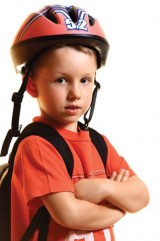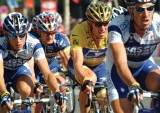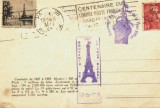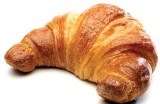Why not use this year’s Tour de France to inspire a creative topic during your French week? Jonathan Lear shows you how...
On Saturday July 4th, 180 competitors will take part in the oldest and most prestigious bicycle race in the world. The Tour de France has been described as the most physically demanding of all athletic events. It has an incredible history dating back to 1903 and provides us with a fantastic context for learning that is not to be missed.
 (Science: Investigating materials)
(Science: Investigating materials)
Rider safety is a key issue in the Tour de France and cyclists are required to wear helmets at all times. This investigation explores suitable materials for safety equipment with the help of some egg head cyclists!
For this activity you will need a range of different materials and lots of hard boiled eggs. The lesson begins with the introduction of the famous, seven times Tour de France champion, Lance Eggstrong. Lance has a problem – his usual source of safety equipment has let him down (credit crunch related bankruptcy) and the Tour is only days away. He needs to find some other way of protecting himself during the treacherous race. The children are given the task of exploring and testing different materials to create a protective helmet. At this point, the activity could be adapted for different age groups. For KS1 children, it could remain an investigation of different materials. At KS2, extra challenge could be created through the consideration of different factors e.g. weight or aero-dynamics.
Egg heads
This activity would work best with children in teams or small groups. Each group would receive a set number of eggs and could then spend a little time turning these into Tour de France crash test dummies. With a deadline agreed, the teams could then explore different combinations of materials for their helmets. Throughout the activity, the children should be challenged to explain their reasons for selecting particular materials, e.g. ‘We decided to use polythene for an outer layer because it’s waterproof’.
When the children’s development and testing time is up, they are invited to bring their safety equipment to the testing arena. Each teams offering is evaluated based on the initial success criteria and the testing eggstravaganza (sorry) can begin.
 (Geography/Art/Design & Technology)
(Geography/Art/Design & Technology)
The Tour de France publicity caravan was created in 1930 and was a parade of decorated vehicles that advertised different products by giving away gifts. Almost eighty years later, the publicity caravan has become a huge attraction during the Tour de France. It consists of a multi-shaped and multi-coloured procession of floats lasting more than 45 minutes.
In this series of activities, groups of children are challenged to assemble the most imaginative and creative float for the Tour de France procession. Rather than base the float on a commercial product, it seems a good opportunity to develop the children’s geographical awareness through the promotion of a location. Each group could be given a French town, city or region on which to base their float.
Float ideas
The first session would be based on the children collecting information from a range of sources and drawing up plans for their float. They would need to find out about specific features such as landmarks, local traditions or produce and use this information to design a float representing their location. After the initial research period, the groups could present their findings to the Tour Publicity Caravan commission (teacher!). After deliberation, the commission would pass judgement as to whether the group were able to create their float and enter it into the procession.
 Classroom tables serve nicely as the vehicle on which to build the float; they will provide the amount of space required and also be portable. It is important that the groups have access to a variety of materials and equipment throughout the task – this may involve some groups painting, model making or using ICT. This may seem off-putting and worryingly chaotic but I find that children remain focused on the task in hand and relish the opportunity to work independently and creatively.
Classroom tables serve nicely as the vehicle on which to build the float; they will provide the amount of space required and also be portable. It is important that the groups have access to a variety of materials and equipment throughout the task – this may involve some groups painting, model making or using ICT. This may seem off-putting and worryingly chaotic but I find that children remain focused on the task in hand and relish the opportunity to work independently and creatively.
The Publicity Caravan procession is an ideal way to finish a unit of work on the Tour de France. It would form the basis of a great celebration of the children’s work and would work brilliantly with the Tour Café (see right). Parents and children from other classes could be invited to line the streets (playground!) in readiness for the parade. The tables that have been transformed into floats could be lined up and the visitors could process past!
(Cross-curricular)
A great way of building cross curricular work would be to create a Tour de France café to showcase and celebrate the work the children have done. The opening of the café would come at the end of the unit and would work very well with the Tour Publicity Caravan procession. There are many different directions that you could take with the café and ideally the children will form part of the planning process. Over a series of weeks leading up to the opening, children could create artwork for the walls of the café. This could include portraits of famous winners – Armstrong, Indurain, Merckx, or landscapes based on regions that the tour passes through. Work in geography on routes could be displayed on giant maps, and information about amazing holiday deals presented persuasively on flyers.
Historical information on the event could be delivered by children in role – visitors to the café could be greeted by Maurice Garin, the first ever winner of the tour in 1903, he could tell the guests what it felt like to win and explain why he was stripped of his victory in the second tour the following year.
 Using Design and Technology skills, children could research and design menus, carry out taste tests on French breads, pastries and cheese. Enterprise skills could be developed through work on pricing and business plans produced. Greetings and key phrases could be practiced in French. On opening, the café would invite parents, governors and members of the local community. They would be welcomed by cheery French speaking waiters and waitresses who would tell them all about the Tour de France and the fantastic work that they have done.
Using Design and Technology skills, children could research and design menus, carry out taste tests on French breads, pastries and cheese. Enterprise skills could be developed through work on pricing and business plans produced. Greetings and key phrases could be practiced in French. On opening, the café would invite parents, governors and members of the local community. They would be welcomed by cheery French speaking waiters and waitresses who would tell them all about the Tour de France and the fantastic work that they have done.
If you want to expand your Tour de France topic further, why not try…
King of the mountains! (PE)
This activity may take a bit of arranging but will be well worth it. Most sports centres and fitness clubs run spinning classes. Spinning takes place on specially designed stationary bikes. As you pedal, an instructor takes you through a visualisation of an outdoor cycling workout. Classes can vary in size but there are some that would cater for 30 children in one go. If you are lucky (or very persuasive!) you may get an instructor who will include a flavour of the Tour de France in their visualisation.
Clocking up the miles (Maths)
There are many opportunities to include maths in a unit on the Tour de France, you could calculate distances – longest route/shortest route, look at scale or develop data handling skills through the collection and interpretation of finishing times.
Becoming a teaching school
Ace-Heads
8 Ways To Get Your Class Drawing
Ace-Art-And-Design
Top tips for differentiation
Ace-Maths
